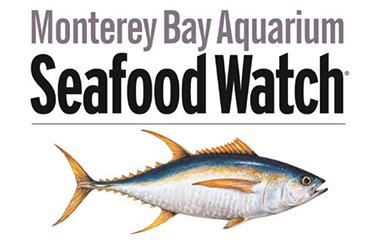The Monterey Bay Aquarium Seafood Watch program has updated its ratings for farmed salmon, with mixed results for aquaculture operations.
The Seafood Watch program rates seafood on a scale of red for “avoid” to green for “best choice.” As part of an updated assessment of farmed salmon – including both Atlantic and coho salmon – the program increased the number of regions it had ratings for, dividing certain areas of the world such as Chile and Norway into multiple categories.
The majority of the farmed salmon now rated by the Seafood Watch program have been rated in the “avoid” category, for reasons related to chemical use, disease, and salmon escapes.
Despite the largely negative ratings, a few salmon farming regions saw their Seafood Watch ratings improve over previous ratings. Atlantic salmon farms in Chile’s Magallanes Region XII saw ratings improve from red “avoid” to yellow “good alternative,” thanks to yellow ratings for six different criteria and a red rating in only the effluent category.
Farms in multiple regions in Norway also improved to yellow “good alternative” thanks to low risk of spreading disease to wild trout, low escapes, and the decline in use of chemicals to treat sea lice. Areas dubbed by Seafood Watch as Production Area 12, West Finnmark; Production Area 13, East Finnmark; and Production Area 1, Swedish border to Jæren; all received “good alternative” ratings.
The other salmon farms that received yellow “good alterative” ratings include Scotland’s Orkney Islands in the Northeast Atlantic Ocean – which already had a yellow rating. The area received a yellow rating thanks to low chemical and antibiotic use, and no reported escapes since 2012. The U.S. State of Maine’s salmon farms also once again received a yellow “good alternative” rating, due to low chemical use and low escape ratings.
None of the salmon farms rated in Seafood Watch's latest update managed to achieve a green “best choice” rating, and ratings in one region dipped from yellow to red. Salmon farmed in Canada’s British Columbia region dropped to “avoid” due to poor chemical use and disease ratings, Seafood Watch said.
A big part of the downgrade was related to potential impacts to wild salmon, the update said.
“The open design of net pens means there’s an inherent risk of farmed salmon transmitting disease to wild salmon populations. Many pathogens are associated with both farmed and wild salmon, but the impacts to wild fish remain inconclusive,” Seafood Watch said. “While salmon farming is not considered a primary cause of declining wild salmon populations, the potential transmission of pathogens and parasites from farms to vulnerable populations is a high concern.”
The downgrade of British Columbia’s salmon farms is yet another blow to a region dealing with the forced closure of salmon farms in the Discovery Islands region, a decision that has had ripple effects through the region and led salmon farmer Mowi to close other farms in the area.
Despite the largely poor results for salmon farmers, some environmental nonprofits were disappointed by certain regions getting a “good alternative” rating, particularly in the Canadian province of Nova Scotia.
“It’s troubling to see Nova Scotia with a higher rating here,” SeaChoice representative from the Ecology Action Centre Simon Ryder-Burbidge said in a release. “We are the only province in Canada that doesn’t publicly report sea lice counts, and river monitoring data for escaped farmed fish is almost non-existent relative to New Brunswick and Newfoundland. The scoring system seems to incentivize a data-poor environment.”







